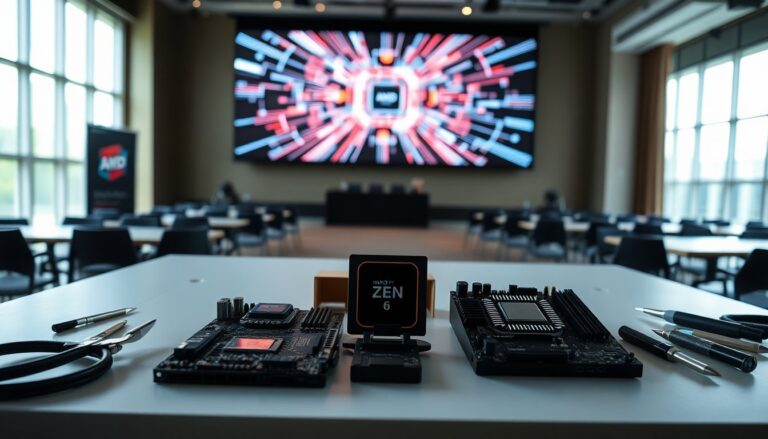Argomenti trattati
AMD has provided a significant update on its future plans with the unveiling of its new CPU roadmap at the Financial Analyst Day event. This revised strategy, referred to as the Leadership CPU Core Roadmap, highlights anticipated advancements and clarifies the company’s direction within the semiconductor market. Although much of the information reiterates previous expectations, it marks the first introduction of the Zen 7 architecture.
Upcoming innovations: the Zen 6 architecture
Set to launch in 2026, the Zen 6 architecture represents a major advancement for AMD’s processor lineup. Utilizing TSMC’s cutting-edge 2nm process technology, Zen 6 is designed to improve both performance and energy efficiency. Mark Papermaster, AMD’s Chief Technology Officer, confirmed that both the standard Zen 6 and Zen 6C configurations will see IPC improvements. This enhancement is expected to boost performance across a range of platforms.
Innovative capabilities of Zen 6
The Zen 6 CPUs will be integrated into various new product lines, including the forthcoming EPYC Venice server processors, Ryzen Desktop Olympic Ridge, and Ryzen Mobile Medusa Point. These products will leverage Zen 6’s architecture to enhance processing power and introduce advanced AI features. Additionally, the Helios server solutions will utilize this technology by combining EPYC Venice processors with the state-of-the-art CDNA 5 GPUs.
Looking ahead: the Zen 7 architecture
AMD has confirmed the development of its next-generation Zen 7 architecture, even as Zen 6 approaches release. Expected between 2027 and 2028, Zen 7 is set to introduce significant changes to the CPU landscape. Although specific details are limited, early indications suggest that it will incorporate a new Matrix Engine designed to enhance AI capabilities.
Rumored specifications
Information about core configurations and cache layouts for Zen 7 remains speculative at this stage. Nonetheless, the architecture is anticipated to support new AI data formats and build upon the advancements introduced with Zen 6. The first product based on Zen 7 is likely to be the EPYC Verano series, targeting data center applications.
AMD’s growth and financial outlook
AMD is experiencing significant financial success alongside advancements in technology. The company announced a record revenue of $9.2 billion for the third quarter of its fiscal year, representing a 36% year-over-year increase. This achievement highlights AMD’s strengthening position within the semiconductor sector.
In an earnings call, AMD’s CEO, Dr. Lisa Su, provided insights into the company’s strategic direction. She emphasized the critical role of artificial intelligence and high-performance computing in future developments. The upcoming Helios solutions, set to launch soon, are projected to surpass competitors with their remarkable computing power and memory bandwidth.
AMD’s latest advancements in CPU technology
The unveiling of the Zen 6 and Zen 7 architectures positions AMD at the forefront of CPU innovation. These processors are designed to significantly enhance performance and efficiency. Moreover, they aim to transform the integration of artificial intelligence into computing systems. As AMD continues to advance its technology, industry experts are keenly observing the potential impact of these developments on future computing landscapes.

